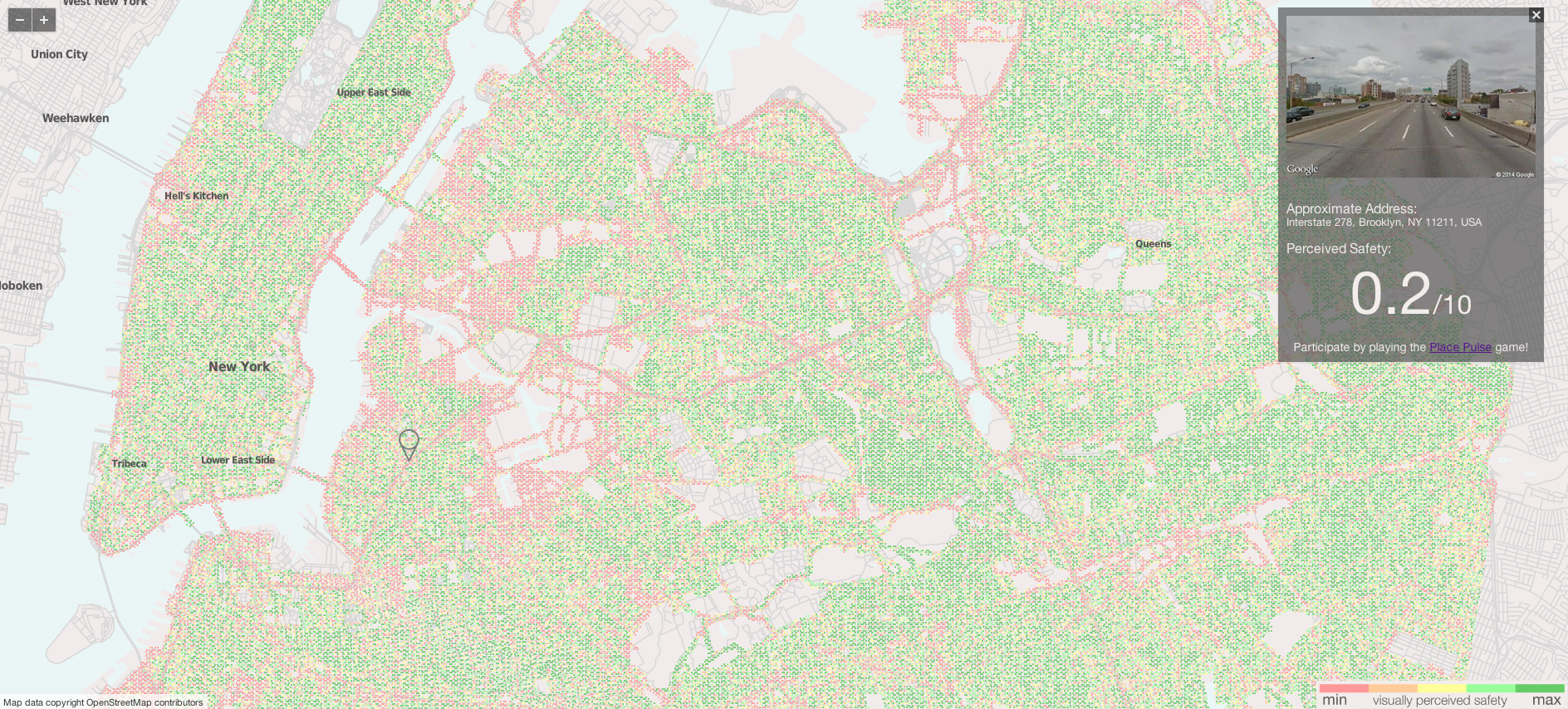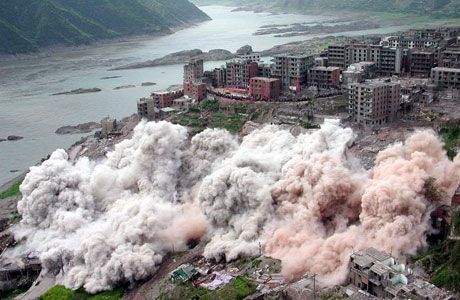A large, heavy-duty balloon gets covered with flexible steel rods and concrete before the balloon is inflated while the concrete is still wet. Once it hardens, the balloon is removed. Basically, it starts off as a flat shape and then gets inflated to its desired size. The balloon can then be reused to fill another domed building. It’s a super quick way of building structures that can take just a few days and, because of its shape, it’s also much more energy efficient than the traditionally built house.
Wednesday, 30 July 2014
Can Inflated Concrete Homes Help Solve the World's Housing Woes?
Remember the DIY days of covering balloons with lots of glue, scraps of paper and paint, and then popping said balloons to reveal a masterfully created bowl? Well, imagine doing paper maché on a larger scale — a much larger scale. The Binishell, an idea for inflated concrete domes dreamed up by Dr. Dante Bini in the 60s, is basically that same concept brought to life.
A large, heavy-duty balloon gets covered with flexible steel rods and concrete before the balloon is inflated while the concrete is still wet. Once it hardens, the balloon is removed. Basically, it starts off as a flat shape and then gets inflated to its desired size. The balloon can then be reused to fill another domed building. It’s a super quick way of building structures that can take just a few days and, because of its shape, it’s also much more energy efficient than the traditionally built house.
A large, heavy-duty balloon gets covered with flexible steel rods and concrete before the balloon is inflated while the concrete is still wet. Once it hardens, the balloon is removed. Basically, it starts off as a flat shape and then gets inflated to its desired size. The balloon can then be reused to fill another domed building. It’s a super quick way of building structures that can take just a few days and, because of its shape, it’s also much more energy efficient than the traditionally built house.
Monday, 7 July 2014
Roadside Assistance for Cyclists? There's an app for that!
Broken bikes aren't meant to be moved around. So what can you do? There's the hassle of searching for a nearby bike shop that’s open, not knowing if it will be fixed in time, how much it will cost and whether it will get fixed properly.
Or there's FlatTire, a new iOS app that uses today’s technology to make the process quicker, cheaper and much more convenient than regular brick-and-mortar bike shops.
The FlatTire app allows users to access the mobile bike services of Amsterdam's Flattire.nl more easily than ever before.
Thursday, 3 July 2014
How Do You Move an Entire City? Ask Sweden
Northern Sweden may be most readily associated with the residential domain of Christmas-time characters, but the region is now turning fantasy into the future of sustainable urban planning — by moving an entire city of 18,200 people two miles east of its current location. Kiruna, founded in 1900, is an iron ore company town and home to the iconic Icehotel, but is slowly cannibalizing upon itself. As the ground beneath the city’s western edge has been mined, deformation is encroaching on the city’s very bedrock.
Monday, 30 June 2014
City of Sydney to trial light coloured pavement to reduce urban heat island effect
The City of Sydney last week announced a trial of lighter-coloured pavement as part of an investigation into ways of reducing temperatures in urban areas, with a short stretch of road in Chippendale selected for the experiment.
The trial will record temperatures across different locations, including the 600 square metre section of Myrtle Street, between Abercrombie and Smithers streets in Chippendale. Over coming months, monitoring equipment will determine whether or not there is a reduction in ambient temperate along the paler pavement.
According to the council, the 'urban heat island effect' means cities are often a few degrees warmer than regional areas due to surfaces such as roads, footpaths and buildings absorbing heat from the sun. Lighter-coloured pavements may be one solution to reduce this effect.
The trial will record temperatures across different locations, including the 600 square metre section of Myrtle Street, between Abercrombie and Smithers streets in Chippendale. Over coming months, monitoring equipment will determine whether or not there is a reduction in ambient temperate along the paler pavement.
According to the council, the 'urban heat island effect' means cities are often a few degrees warmer than regional areas due to surfaces such as roads, footpaths and buildings absorbing heat from the sun. Lighter-coloured pavements may be one solution to reduce this effect.
Wednesday, 25 June 2014
Rooftop Urban Agriculture
Large, flat, homogeneous and unused industrial rooftops offer great possibilities to install urban farms and provide food within the city. Industrial areas building codes normally do not constrain heights, so farming activities are a concrete opportunity to capitalize the unused industrial rooftop spaces. Urban farming has a lot to do with the use of unexpressed potential of the city space. It is a tool to turn them productive. It is a tool – I say – to grow the city. To cultivate it from all the possible aspects as a living environment.
Monday, 23 June 2014
Return our streets to the 'human' scale
How can a space constructed for a car be comfortable for a human being?
As soon as a street becomes uncomfortable for driving it immediately becomes more comfortable for walking.
This is why we need to rediscover the “high street”.
I remember every Saturday morning my Mother and I would travel into town and walk down the high street of Biloela in Central Queensland to buy some bread from the local bakery and meet with friends and family.
Very few shops had air conditioning so doors were wide open to the streets and in the morning you would escape the hot sun under the long line of awnings and by the afternoon you would switch to the other side of the street.
In winter we would do the opposite. Simple but effective.
This was all brought to my attention when I discovered Elizabeth St – the small but strong high street of Croydon.
Tucked away behind the freeways that are Port and South Road, I feel immediately at home in this informal, interactive community space.
Over 20 years, numerous high streets have been sunk by shopping centres turning our attention inwards and drawing our focus towards $9.99 FOR TODAY ONLY!!
These spaces are devoid of any external elements such as air, or light…
As soon as a street becomes uncomfortable for driving it immediately becomes more comfortable for walking.
This is why we need to rediscover the “high street”.
I remember every Saturday morning my Mother and I would travel into town and walk down the high street of Biloela in Central Queensland to buy some bread from the local bakery and meet with friends and family.
Very few shops had air conditioning so doors were wide open to the streets and in the morning you would escape the hot sun under the long line of awnings and by the afternoon you would switch to the other side of the street.
In winter we would do the opposite. Simple but effective.
This was all brought to my attention when I discovered Elizabeth St – the small but strong high street of Croydon.
Tucked away behind the freeways that are Port and South Road, I feel immediately at home in this informal, interactive community space.
Over 20 years, numerous high streets have been sunk by shopping centres turning our attention inwards and drawing our focus towards $9.99 FOR TODAY ONLY!!
These spaces are devoid of any external elements such as air, or light…
Read more at the Adelaide Independent News here
Monday, 16 June 2014
How to Design a City for Women
In 1999, officials in Vienna, Austria, asked residents of the city's ninth district how often and why they used public transportation. "Most of the men filled out the questionnaire in less than five minutes," says Ursula Bauer, one of the city administrators tasked with carrying out the survey. "But the women couldn't stop writing."
Women used public transit more often and made more trips on foot than men. They were also more likely to split their time between work and family commitments like taking care of children and elderly parents. Recognizing this, city planners drafted a plan to improve pedestrian mobility and access to public transit.
Additional lighting was added to make walking at night safer for women. Sidewalks were widened so pedestrians could navigate narrow streets. And a massive staircase with a ramp running through the middle was installed near a major intersection to make crossing easier for people with strollers and individuals using a walker or a wheelchair.
Women used public transit more often and made more trips on foot than men. They were also more likely to split their time between work and family commitments like taking care of children and elderly parents. Recognizing this, city planners drafted a plan to improve pedestrian mobility and access to public transit.
Additional lighting was added to make walking at night safer for women. Sidewalks were widened so pedestrians could navigate narrow streets. And a massive staircase with a ramp running through the middle was installed near a major intersection to make crossing easier for people with strollers and individuals using a walker or a wheelchair.
Friday, 6 June 2014
Forget Segways! Skateways!? The closest thing to a hover board this decade
Inventors in Silicon Valley are working on a revolutionary transportation technology. It’s called a skateboard. I recall my first skateboard, it had the Teenage Mutant Ninja Turtles on it. IT WAS AWESOME! Single kicktail and extra wide body for more Ninja Turtle action. Wicked!
But the new era of skateboarding isn't designed for your typical teen in a Ramones t-shirt (or Ninja Turtles), it's aimed at the growing number of urban professionals who don't want to drive to work yet want to be cool... and have deep pockets - the Boosted board (pictured below) costs a cool $US1995.
But the new era of skateboarding isn't designed for your typical teen in a Ramones t-shirt (or Ninja Turtles), it's aimed at the growing number of urban professionals who don't want to drive to work yet want to be cool... and have deep pockets - the Boosted board (pictured below) costs a cool $US1995.
How Crowdsourcing and Machine Learning Will Change The Way We Design Cities
Researchers at MIT Media Lab are using crowdsourced data to create an algorithm that determines how safe a street looks to the human eye--information that could be used to guide important urban design decisions.
Thursday, 5 June 2014
Inside The Forgotten Chinese Cities Destroyed By The Three Gorges Dam
A designer gathers and displays the artifacts of ancient towns now flooded by a massive dam as a reminder of what China loses as it develops at breakneck speed.
The Three Gorges Dam, a giant hydroelectric dam located along China's Yangtze River, has the biggest installed capacity of any power station in the world. But the project, finished in 2012, hasn't exactly been a triumph over dirtier forms of energy like coal power. Concerns about pollution, landslides, earthquakes, and biodiversity abound. And for about 4 million people, the dam project was mostly a disaster, as it flooded 13 cities, 140 towns, and 1,352 villages. (Everyone was relocated to new settlements built on higher ground, which in an Orwellian feat, were given the same names as their former communities.)
Subscribe to:
Posts (Atom)










